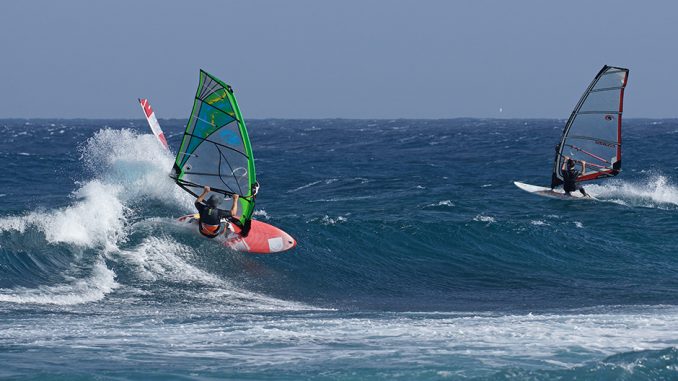
Words: Mark Dowson
Pics: Russell Groves, Mark Dowson
This isn’t a technique article. This is about helping out your mates, seeing them progress and watching them evolve. This is an article about helping a fellow sailor push on and reach that next level. We all can do this. Mark Dowson describes one such scenario.
I can’t quite remember how I started trying to help 20-year old Rowan Keen crack his first carve gybes whilst we were out sailing on holiday. It turned out to be a lot of fun for us both and the photographs show a sequence of one of his first successful turns this summer.
Rowan likes going fast over the reef, he likes jumping and tends to only sail on the windiest of days. He is also a very accomplished swimmer, very fit, and strong. He also has a great talent for crashing into his sails in a spectacular fashion, then rising from the carnage with a wry smile on his face. He hails from Holland, his Dad is English and Mum Dutch and he only sails when on holiday with his family.
I’ve been windsurfing for many years, but I am by no means a windsurfing coach or instructor! I really didn’t know the best or quickest way of teaching someone to carve gybe.
I prefer the strap to strap gybe, I’m not sure why, I recall reading somewhere it helps with wave-riding and so, many years ago, I defaulted to this one style of gybe. So obviously this was the one I thought I could teach. So overall, things were stacked up against us somewhat – I didn’t clearly know the subject matter, or so I was to learn.
Read about the strategies we tried on the way…
Longer lines
I guessed that he was crashing so much because his lines were frighteningly short! He was really close to the rig and didn’t have time to react as he fearlessly skimmed over an ever-changing waterscape at great speed. I personally prefer longer lines, so I found an odd pair of my old longer 30 and 32 that lay forgotten at the back of the board store. They were well worn but still serviceable.
Rowan’s feedback was he really liked the longer lines, though he preferred the shorter 30s to the 32s. I noticed after a couple of days that he was going much faster and he was jumping much better! It was hard to keep up at times! In the set up for the gybe it allowed him to unhook and place his back foot on the inside rail without unsettling the trim even in choppier waters.
Beach simulators
Describing on the beach what to do with board and sail was useful but, in hindsight, I certainly didn’t use enough of this with Rowan. I have since started helping another friend to improve his gybes and I used this strategy a lot more.
Demonstration and observation
We sailed along together and I would gybe so (hopefully) he could see how I did it. I would then follow him and watch how he did, offering suggestions of what to try next. The first thing I noticed was he hung onto the rig for grim death and wouldn’t let go till he had almost completely stopped, which by then of course it was too late.
“Let go of the back hand earlier,” was the advice I thought might be the key. So he worked on doing that and I added, “lean the sail more to the inside’ and finally, ‘bring the new boom hand in front of your face and to the inside of the turn.”
Rowan’s feedback was that it was hard to do! (He kept holding on almost doing a carving 360 at times before splashing into the water.) Flipping the rig a lot earlier helped loads, it makes it easier to focus on carving the board round because it takes the power out of the sail and you’re not messing about with the rig that much.
After he had successfully done his first three, he thought these tips had been really useful.
Coach or professional instructor?
Why we didn’t get a professional instructor? There are certainly lots to choose from, and perhaps if my young nephew and even younger grandchildren decide they want to learn we will get a coach!
I taught myself to forward loop many years ago. But recently I have started working with a brilliant instructor using video footage, and he has totally transformed my understanding of the move using a simulator. This has brought a lot more fun into the move for me, inspiring me to improve further.
Photographs
The photographs, courtesy of Dad Gary, show one of the first three ‘successful’ gybes and, although far from a technically perfect performance, both student and teacher gained a great deal of fun and satisfaction from the sessions.
Mark Dowson Team rider for Juice Boardsports
Free sailing in Lanzarote:
Next time…?
I am still left wondering if strap to strap is the right technique to learn first, as opposed to the step gybe. But perhaps next summer we can work on that!

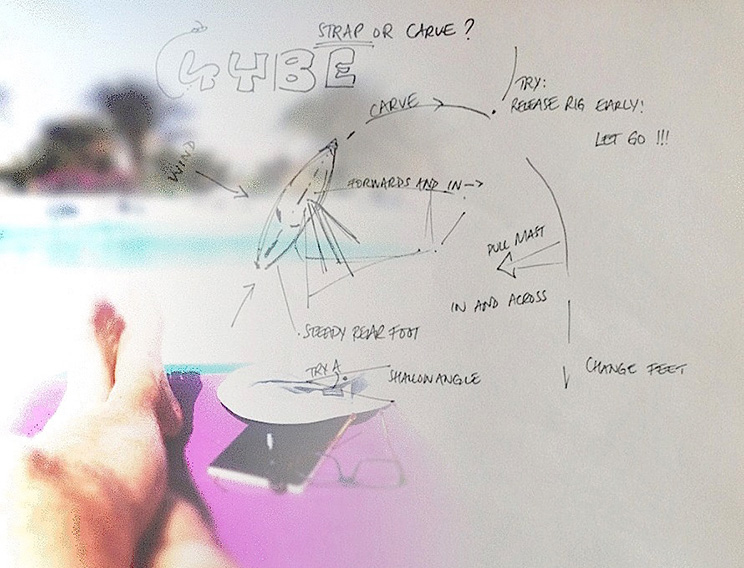
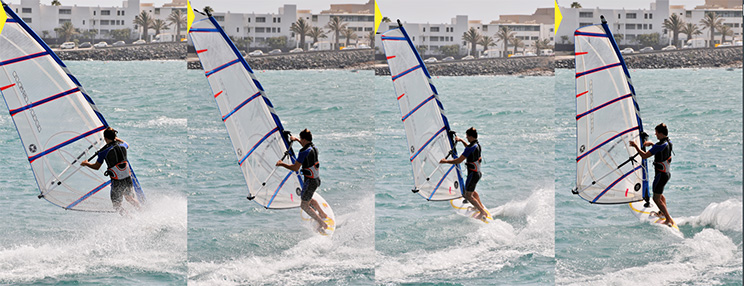
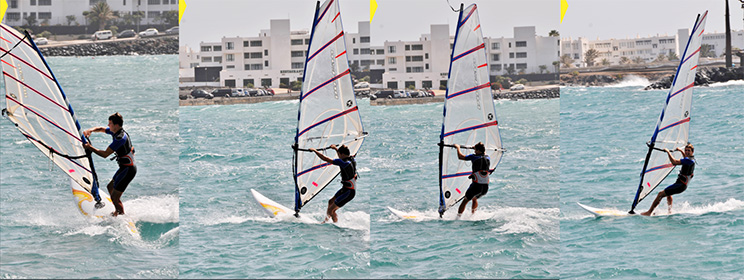
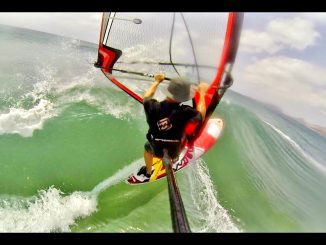
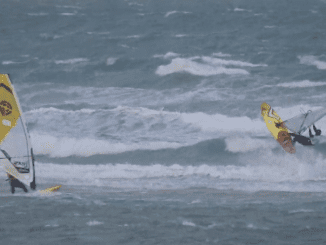
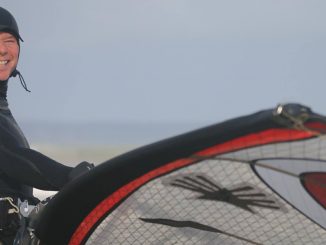
Leave a Reply